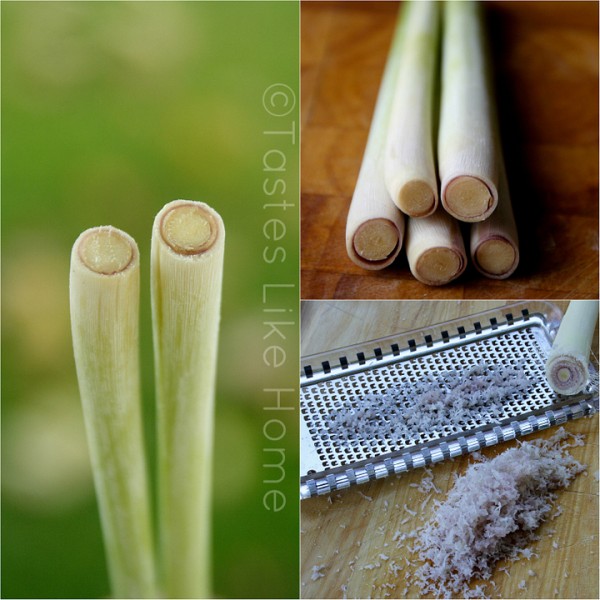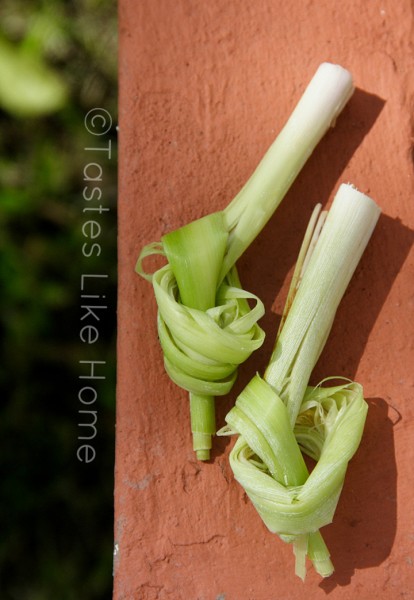Last week’s recipe of Thai fish cakes – that included a signature ingredient in Thai cuisine, lemongrass – prompted questions from several readers about the use of the lemongrass stalk. While many of us in the Caribbean familiarly use the long green leaves for tea, it is the stalk of the lemongrass is used widely in South East Asian cuisine.
Lemongrass is a tropical variety of grass that can be used in its entirety for medicinal as well as culinary uses. The leaves form a part of bush-tea mixes found throughout the region and other parts of the world where folk medicine and remedies are used. Many among us can sing the praises of hot fragrant cups of lemongrass tea. I drink it on the weekends for sheer pleasure but others do so to aid digestion, the common cold or other ailments.
a part of bush-tea mixes found throughout the region and other parts of the world where folk medicine and remedies are used. Many among us can sing the praises of hot fragrant cups of lemongrass tea. I drink it on the weekends for sheer pleasure but others do so to aid digestion, the common cold or other ailments.
The stalk – the bottom part of the lemongrass – is where the intense flavour of this herb lies. The fibrous outer layers around the stalk are peeled away to get to the tender, soft inner part of the lemongrass. This tender part of the stalk can be chopped, minced, grated or bruised and be used in many dishes from curries to soups and stews.
To use the stalks whole, you must lightly crush or bruise it so that when added to the pot, it can impart its one-of-a-kind lemony, citrusy flavour and aroma.
The stalks of lemongrass make for ideal skewers when grilling. Once bruised you can pack seasoned ground meat or seafood around the stalks before cooking; the meat or seafood will benefit from an infusion of lemongrass flavour. When cooked whole, the stalks should be removed from the food before serving. Treat it like you would a bay leaf.

When you’re cooking rice, especially using the absorption method – measured water and rice cooked together until all the liquid has been absorbed – the addition of a couple of bruised lemongrass stalks, makes the rice good enough to eat on its own. Yummm, eating that rice with a hot fish, shrimp, chicken, beef or pork curry can easily become the preferred way of having your rice. I know that most people boil their rice; you can add the bruised/crushed lemongrass stalks to the boiled rice too. To really intensify the flavour, add it to the water so that it comes up to a boil at the same time. This way, the water is flavoured even before the rice is added to the pot.
The tenderness of the lemongrass stalk makes for easy chopping and fine mincing to form part of a paste. Add it to Green Seasoning when blending the ingredients, to curry pastes when grinding the onions, garlic and herbs or any other type of paste you are making that will be used to as a marinade or the aromatics to sauté before adding other ingredients.
The longer the lemongrass is cooked in the food, the more flavour it imparts. How much to use is dependent on how much food you are cooking, the size of the stalks and how intense of a flavour you want. I use 1 stalk (whole) per cup of rice when I am cooking. 3 stalks when making fish curry, 2 stalks with chicken curry and when making stews and soups I use about 3 stalks. I vary the number of stalks I add to anything depending on if I already have some of it ground up in the paste I am using to cook.
Lemongrass also comes in a powder form. The tender stalks are dried and then pulverized. I bought a bottle whilst on an overseas trip a couple of month ago but haven’t used it yet. It is one of those situations where because I have ready access to the fresh variety, I haven’t gotten around to using the powder yet.

Lemongrass will keep wrapped in the refrigerator for up to 2 weeks. Frozen it will last longer. I suggest that you chop, mince, grate or grind the lemongrass before freezing it so that you can up break or cut off as much as you need and add it directly to the pot.
The influence of food media
Thanks to popular food media channels such as the Food Network and the Cooking Channel to name a couple, some of the high-end supermarkets here in Barbados are stocking lemongrass stalks. While that is all well and good, it is absolutely unnecessary that such an ingredient should be imported rather than be sourced locally. The demand is not that high that the needs of the market cannot be met locally. All across this beautiful land lemongrass grows wild, yet a lot of the lemongrass sold in the supermarkets is imported. And don’t get me started on the princely sum they want to charge for 2 or 3 small stalks! But then again, they are not catering for the average person like you and me, are they?
Go call up your family, relatives, friends or neighbours that you know have lemongrass, make some tea and then use the stalks to cook with this weekend.
Cynthia








